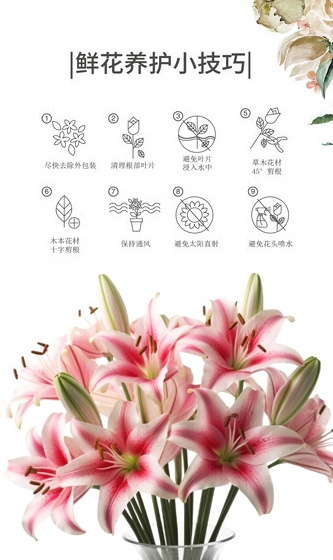R可视化:用Shiny实现类Excel数据透视图
前言
Excel里有一个数据透视图功能在做数据探索时非常好用。它允许用户选择列名、行名,根据选择结果绘图。
本文利用Shiny实现一个类似数据透视图的可视化工具。
为什么做这个工具:数据可视化的烦恼
数据分析师经常需要看数据。通常而言,数据或存放在MySQL数据库,或存放在Hadoop集群,或存放在阿里云的ODPS上。分析师根据业务需求写SQL语句从数据平台上提取出需要的数据,随后就面临着本文要重点讨论的怎么对数据可视化的难题。
对于一个固定的需求,通常需要观察多组数据。普通一点的分析师,可能是拷贝出一组数据,贴到Excel里,绘个图看一下,然后拷贝下一组数据;高级一点的分析师,可能是用R写好一段代码,然后修改分组的变量取值重复运行代码来观察多组数据。我在工作中动辄需要观察一百组数据,上述两种方法仍然不够好用,最好的方法是我鼠标点击一百次,每点击一次产生一幅图。
更可恶的是,每来一个新需求,不论是Excel还是R都得根据新需求定制化一遍操作或一套代码。
于是某一天,我实在忍不了,就尝试做了一个工具,将SQL写完后的数据可视化工作给工程化了。
这个工具首先支持select查询语句,执行成功后会显示执行结果,同时提供一个设置面板,让用户选择数据分组字段、x轴字段、y轴字段,然后生成分组结果,每点击一个结果,生成该分组数据的图。目前该工具只支持时间序列数据,能够绘制点图和线图。
为什么用Shiny
Shiny让数据分析师写完分析与可视化代码后,稍微再花几十分钟,就可以把分析代码工程化,将分析成果快速转化为交互式网页分享给别人。所以,如果你是一名使用R的数据分析师,选择Shiny是非常明智的,因为它不需要你有新的技能,且开发起来实在太快。它跟通常我们了解的其他框架不一样:其他框架一般都是前后端分离,后端提供json,前端根据json绘图绘表,需要若干个程序员协同开发完成。然而这种可视化的小工具往往是得不到研发资源的支持,只能本数据分析师一人操刀前后端全包。
当一个项目以数据计算和可视化为核心,只投入数据分析师一个人,要求快速实现效果,对执行效率和负载无要求,那么shiny无疑是一个非常诱人的方案。
代码
废话不多说,拷贝以下代码至RStudio,运行APP即可。有朋友反馈说表格画不出来,我推测是DT控件没装好,重装一下试试。将代码中的debug=TRUE改为debug=FALSE,添加自己需要的数据接口就可以直接使用了。
library(shiny)
library(shinyjs)
library(DT)
library(dplyr)
library(tidyr)
library(stringr)
library(ggplot2)
library(scales)
library(plotly)
run.sql <- function(sql, debug=FALSE) {
if(debug==FALSE){
df <- XXXXX
}
else{
group_id <- rep(1, nrow(economics))
dt <- paste(as.character(economics$date), "00:00:00")
df <- cbind(group_id, dt, economics)
}
return(df)
}
ui <- fluidPage(
useShinyjs(),
titlePanel("时间序列数据可视化工具"),
div(id="download",
fluidRow(
column(12,
textOutput(outputId="download_info")
)
),
fluidRow(
column(12,
HTML(
paste('<textarea id="sql_cmd" rows="10", cols="180">',
"select * from xxxx limit 1000;",
'</textarea>')
)
)
),
fluidRow(
column(12,
actionButton(inputId="refresh_button", label="加载数据", icon=icon("submit")
)
)
)
),
shinyjs::hidden(
div(id="table",
hr(),
dataTableOutput(outputId="sql_tab"),
hr(),
textOutput(outputId="tab_button_message"),
sidebarLayout(
div(id="table_tool",
sidebarPanel(
selectInput(inputId="group_fields", label="绘图分组字段", choices=NULL, selected=NULL, multiple=TRUE),
selectInput(inputId="x_field", label="设置x轴字段,必须是日期时间", choices=NULL, selected=NULL, multiple=FALSE),
selectInput(inputId="y_line_fields", label="设置y轴线图字段", choices=NULL, selected=NULL, multiple=TRUE),
selectInput(inputId="y_point_fields", label="设置y轴点图字段", choices=NULL, selected=NULL, multiple=TRUE),
selectInput(inputId="group_shape_field", label="设置点图形状字段", choices=NULL, selected=NULL, multiple=FALSE),
actionButton(inputId="tab_button", label="显示分组表格", icon=icon("submit")),
width=3
)
),
div(id="group_content",
mainPanel(dataTableOutput(outputId="group_tab"),
width=9
)
)
)
)
),
shinyjs::hidden(
div(id = "plot",
hr(),
plotlyOutput(outputId="case_viewer", height="600px")
)
)
)
server <- function(input, output, session) {
observe({
if(is.null(input$sql_cmd) | input$sql_cmd == "") {
shinyjs::disable("refresh_button")
}
else{
shinyjs::enable("refresh_button")
}
if (input$x_field == "" | (is.null(input$y_line_fields) & is.null(input$y_point_fields)) | is.null(input$group_fields)) {
shinyjs::disable("tab_button")
} else {
shinyjs::enable("tab_button")
}
})
sql_data <- eventReactive(input$refresh_button, {
cat(file=stderr(), "#### event log ####: refresh button clickedn")
shinyjs::disable("refresh_button")
shinyjs::hide(id = "table", anim = TRUE)
shinyjs::hide(id = "plot", anim = TRUE)
res <- run.sql(input$sql_cmd, debug=TRUE)
updateSelectInput(session, inputId="group_fields", choices=colnames(res))
updateSelectInput(session, inputId="x_field", choices=colnames(res))
updateSelectInput(session, inputId="y_line_fields", choices=colnames(res))
updateSelectInput(session, inputId="y_point_fields", choices=colnames(res))
updateSelectInput(session, inputId="group_shape_field", choices=c("无",colnames(res)), selected="无")
shinyjs::enable("refresh_button")
shinyjs::show(id = "table", anim = TRUE)
shinyjs::hide(id = "group_content", anim = FALSE)
return(res)
})
output$download_info <- renderText({
if(input$refresh_button == 0){
message <- "请敲入SQL select查询语句,点击按钮提交"
}
else{
message <- isolate({paste0("表格下载成功!总行数", nrow(sql_data()), ",总列数", ncol(sql_data()), ",更新时间是", as.character(lubridate::now(), format="%Y-%m-%d %H:%M:%S"))
})
}
message
})
output$sql_tab <- DT::renderDataTable({
datatable(sql_data(), filter='top', selection='single')
})
group_data <- eventReactive(input$tab_button, {
cat(file=stderr(), "#### event log ####: tab button clickedn")
res <- sql_data() %>%
select(one_of(input$group_fields)) %>%
distinct()
shinyjs::show(id="group_content", anim=TRUE)
return(res)
})
output$tab_button_message <- renderText({
if(input$tab_button == 0) {
message <- "请在下方左侧设置数据可视化规则;
点击按钮后,下方右侧将以表格显示数据分组结果;
点击表格的一行,将在下方绘制该行所指分组数据的图形"
}
else {
message <- isolate({paste0("绘图分组数", nrow(group_data()), ",更新时间是", as.character(lubridate::now(), format="%Y-%m-%d %H:%M:%S"))
})
}
message
})
output$group_tab <- DT::renderDataTable({
datatable(group_data(), filter='top', selection='single')
})
observeEvent(input$group_tab_rows_selected, {
cat(file=stderr(), paste0("#### event log ####: group table row ", input$group_tab_rows_selected, " clickedn"))
output$case_viewer <- renderPlotly({
s <- input$group_tab_row_last_clicked
cat(file=stderr(), "#### event log ####: table row", s, "clickedn")
p <- ggplot()
filter_str <- isolate({str_c(group_data()[s, input$group_fields], collapse="_")})
target_plot_data <- sql_data() %>%
unite_("new_var", input$group_fields, remove=FALSE) %>%
filter(new_var==filter_str)
if(length(input$y_line_fields) > 0) {
target_plot_data$dt <- lubridate::ymd_hms(target_plot_data[,input$x_field], tz="UTC-8")
line_df <- target_plot_data %>%
tidyr::gather(col_name, thresh, one_of(input$y_line_fields)) %>%
dplyr::mutate(thresh=as.numeric(thresh))
p <- p + geom_line(data=line_df, aes(x=dt,y=thresh,color=col_name))
}
if(length(input$y_point_fields) > 0) {
target_plot_data$dt <- lubridate::ymd_hms(target_plot_data[,input$x_field], tz="UTC-8")
point_df <- target_plot_data %>%
tidyr::gather(col_name, thresh, one_of(input$y_point_fields)) %>%
dplyr::mutate(thresh=as.numeric(thresh))
if(input$group_shape_field != "无") {
point_df[, input$group_shape_field] <- as.factor(point_df[, input$group_shape_field])
p <- p + geom_point(data=point_df, aes_string(x="dt",y="thresh",color="col_name", shape=input$group_shape_field))
}
else{
p <- p + geom_point(data=point_df, aes(x=dt,y=thresh,color=col_name))
}
}
p <- p
ggplotly(p)
})
shinyjs::show("plot", anim = TRUE)
})
}
shinyApp(ui=ui, server=server)
注:为了让用户明白工具的使用方法,代码采用shinyjs在适当的时机隐藏/显示对应的组件;在eventReactive事件驱动的计算中,需要保证至少一个依赖与该reactive的组件处于显示状态,否则无法触发计算,observeEvent不存在此问题。
关于作者:丹追兵:数据分析师一枚,编程语言python和R,使用Spark、Hadoop、Storm、ODPS。本文出自丹追兵的pytrafficR专栏,转载请注明作者与出处:https://segmentfault.com/blog...
相关知识
R可视化:用Shiny实现类Excel数据透视图
用R 语言,进行静态绘图和 Shiny 的交互可视化演示
R语言高级可视化技巧:使用Plotly与Shiny制作互动图表
探索Shiny:用R语言轻松构建交互式Web应用
excel数据可视化图表
掌握R语言:交互式绘图的实战技巧
数据分析应该用什么?6款常用工具对比
对比6款 “数据分析” 工具,学什么,一目了然!
数据分析师的书单
excel怎么做交互式图表
网址: R可视化:用Shiny实现类Excel数据透视图 https://www.huajiangbk.com/newsview2290100.html
| 上一篇: 多组数据统计图可视化 |
下一篇: 揭秘:零实验 GBD 数据库挖掘 |
推荐分享

- 1君子兰什么品种最名贵 十大名 4012
- 2世界上最名贵的10种兰花图片 3364
- 3花圈挽联怎么写? 3286
- 4迷信说家里不能放假花 家里摆 1878
- 5香山红叶什么时候红 1493
- 6花的意思,花的解释,花的拼音 1210
- 7教师节送什么花最合适 1167
- 8勿忘我花图片 1103
- 9橄榄枝的象征意义 1093
- 10洛阳的市花 1039










